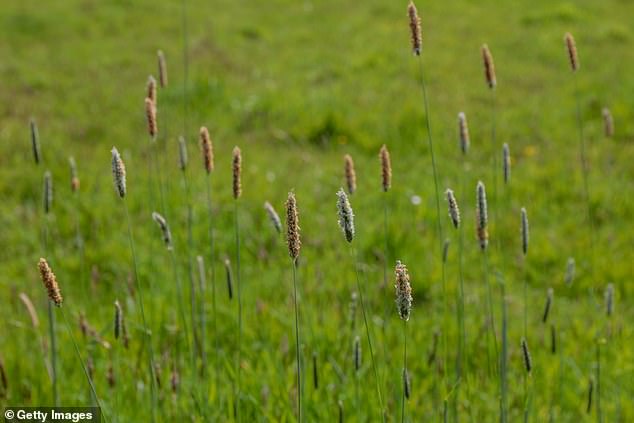An expert has issued an urgent warning to dog owners over a plant and which could prove fatal to their pooches.
With fields drying out, and wild grasses going to seed, foxtails – the sharp, barbed tips of certain grasses – are becoming increasingly prevalent in the UK.
While they may appear harmless, they can burrow into dogs’ paws, ears or skin and cause painful infections.
And this time of year sees grass seed injuries in dogs spike, with July, August and September seeing the highest number of cases, according to Simon Crawshaw, dog nutrition expert at grain-free dog food supplier Hilltop Pet Food.
One third of all grass seed injury claims last year were made in July alone.
Simon noted that knowing the signs can make all the difference if your dog is already affected.
He said: ‘Foxtails might seem harmless, but once they embed into a dog’s skin or ears, they can cause serious problems.
‘They don’t break down naturally and can travel deeper into the body, sometimes leading to infections or abscesses. Catching them early is crucial, especially after walks through fields or long grass.’

The summer months are the most dangerous when it comes to foxtail seeds – which may appear harmless but can be deadly for dogs (stock image)
He shared tips with dog owners so they can keep vigilant and try to reduce the riak of their pets being affected by the plants.
When it comes to what to look out for, Simon noted that foxtails are most common in long, dry grasses, especially in fields, countryside paths, and parks that haven’t been cut back.
They tend to attach themselves to fur and then migrate into the body.
Common signs of foxtail-related injuries include: sudden limping or paw licking; redness or swelling between toes; head shaking or ear scratching; sneezing, coughing, or nasal discharge (if inhaled); and sudden sensitivity around the groin or armpits.
According to the expert, people who notice any of these symptoms in their dog should take their canine to be checked by a vet.
The sooner a foxtail is removed, the lower the risk of infection or deeper migration.
When it comes to protecting your dog during foxtail season, Simon recommends making a few small changes to your routine during the summer months.
‘Dogs with longer or curlier coats are more at risk, as foxtails can get lost in the fur and go unnoticed,’ he said.

Foxtail plants – scientific name Alopecurus – are a part of the grass family and can cause serious problems if dogs come into contact with them (stock image)
‘A simple brush-down after each walk can save you a lot of stress and a potentially costly vet bill.’
He added that when it comes to fighting injury in general, dogs should be fed an optimum diet and kept in peak condition, as a dog’s overall health can impact how they recover if they do get injured.
‘Dogs on a high-quality, nutrient-rich diet tend to heal faster and have stronger immune responses,’ he explained.
‘Good food won’t stop a foxtail, but it can support their recovery and reduce the risk of infections getting worse.’
Simon also noted that while foxtails ‘might not be on every dog owner’s radar’, they’re one of the most common summer hazards for UK dogs, especially now, as grasses dry out and go to seed.
He noted that a quick check after walks, a bit of fur maintenance, and awareness of the signs can ‘go a long way in keeping your dog safe and happy this summer’.












